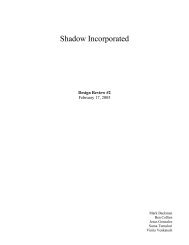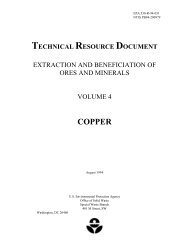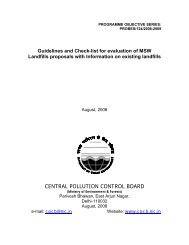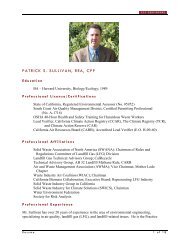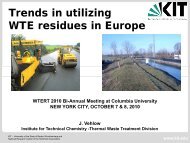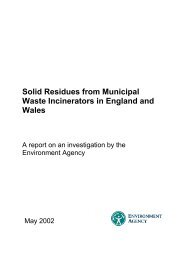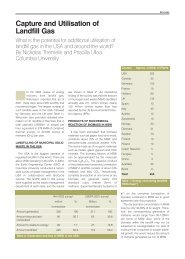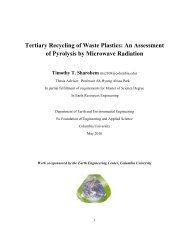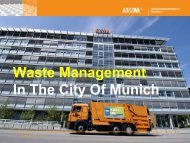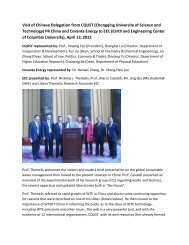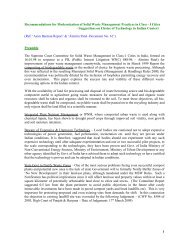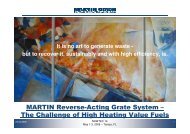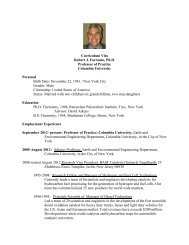Small Scale Waste-To-Energy Technologies - Columbia University
Small Scale Waste-To-Energy Technologies - Columbia University
Small Scale Waste-To-Energy Technologies - Columbia University
Create successful ePaper yourself
Turn your PDF publications into a flip-book with our unique Google optimized e-Paper software.
Risk Perception Article/SurveyThe sampling population of the Risk Perception survey included three hundred and fifty adult individuals(selected at random) who lived within five kilometers of the incineration facility. These individuals weresent an introductory letter followed by a telephone interview ten days later. The results of this surveywere as follows:Approximately one third of the sampling population were unaware of the incinerator and theseunaware individuals were less supportive of the incinerator than the aware group.About half of the aware group were also not supportive of the facility, with the remainder of theaware group in support of the incinerator.The authors of this article note that the survey was conducted in order to “further understanding ofcommunity responses to technology perceived as ‘hazardous’.” In agreement with the authors, it isinteresting to see that those individuals which were aware of the incinerator were more in favor of thefacility than those who were unaware 3 . This can be partially explained by Zaller’s Reception Axiomwhich emphasizes that the more attentive or aware an individual is overall, the more likely that personwill receive or comprehend a message. Or in other words, Zaller notes that an individual’s general,chronic awareness would influence his or her opinion prior to receiving the information. However, thisresult does not appear to be in line with Zaller’s Ambivalence Deduction (D1), which states that thosewho are not highly informed are more apt to accept messages that contradict their true preferences. Ofcourse in this case, it is safe to assume that the preference of the entire sampling population is to live faraway from something perceived as potentially hazardous. The authors of the risk perception articleconclude “that informing the public about technology perceived as hazardous may not lead to alarm, butmay in fact increase acceptance 3 .ConclusionWhen relaying information to the public regarding municipal solid waste incineration (or WtE), it is ofutmost importance to refer to it within the context of “The Expanded Hierarchy of <strong>Waste</strong> Management” 4 .This system clearly depicts the priorities for managing solid waste sustainably, as the first and secondpriorities are waste reduction and recycling, respectively. It is believed that if this were done in theCambridge Reports poll, WtE would have been seen as even more desirable by the public. Also, theconclusion made in the risk perception directly article relates to Zaller’s argument on elite discourse inthat elite messages serve as cues to the public in establishing a policy position.64



